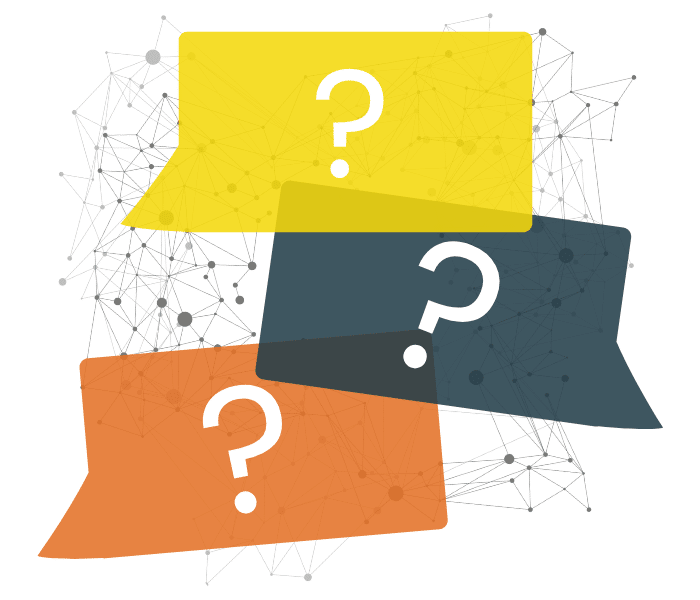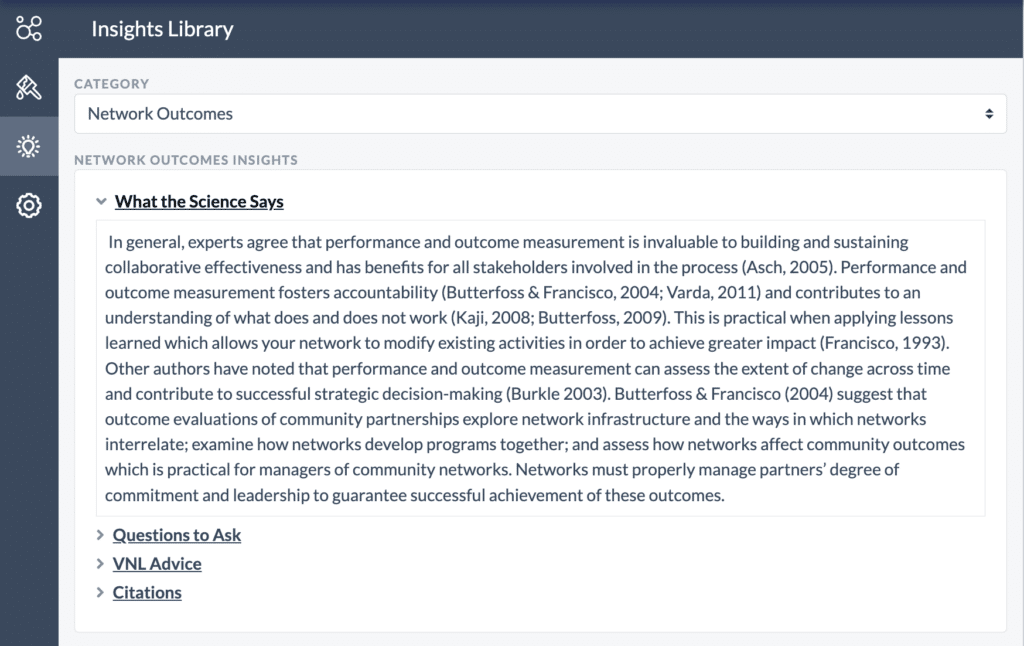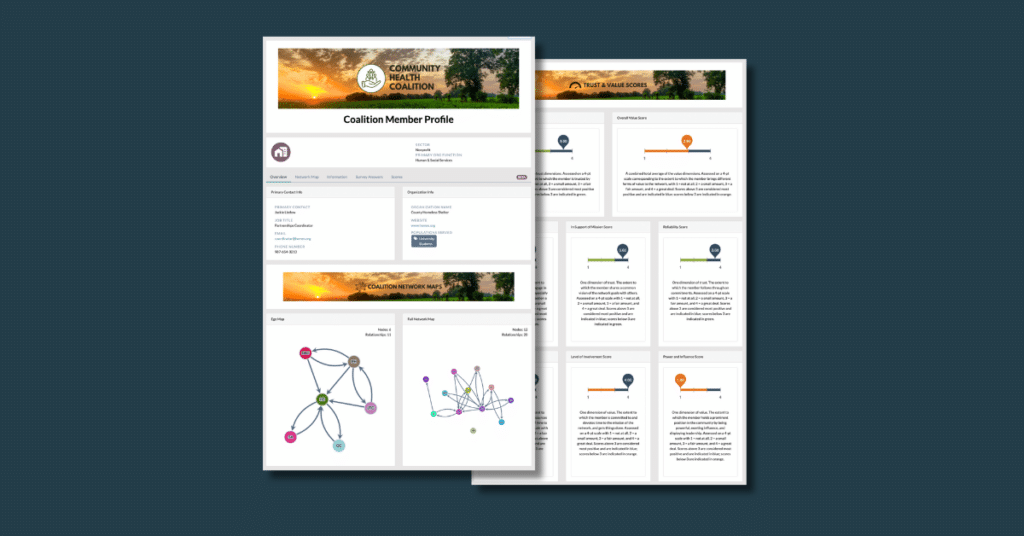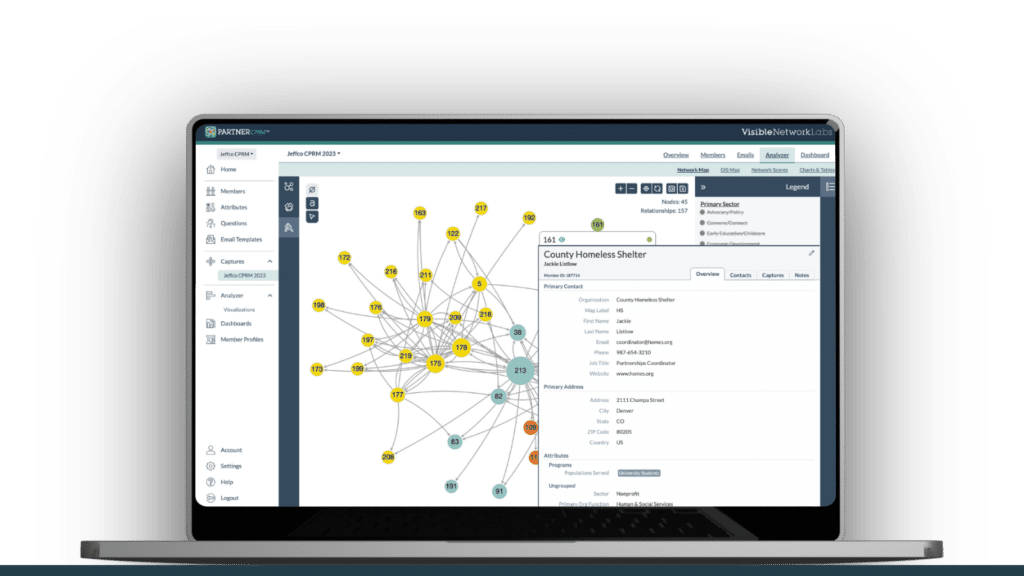Health systems are increasingly being understood as dynamic, adaptive, and deeply interconnected structures, with a growing body of evidence showing the critical role organizational networks play in enhancing outcomes. Longitudinal Network Analysis (LNA) offers a promising method for evaluating and strengthening these interorganizational relationships over time.
However, as highlighted by Glandon, Paina, and Hoe in their 2021 BMJ Global Health article, applying LNA in health systems research and practice comes with significant challenges. This article introduces those key challenges and illustrates how the PARTNER CPRM platform addresses them, leveraging expert recommendations to make LNA more feasible and impactful.
Table of Contents
What is Longitudinal Network Analysis (LNA)?
Longitudinal Network Analysis (LNA) is a research method that examines how networks of relationships between organizations or individuals change over time. In the context of health systems research, LNA provides a dynamic view of how collaborations, partnerships, and information flows evolve, offering insights into the effectiveness of interventions and the overall health system performance.
LNA typically involves collecting network data at multiple time points, allowing researchers to track changes in network structure, composition, and interactions. This approach can reveal important trends, such as the strengthening or weakening of certain relationships, the emergence of new key players, or shifts in collaboration patterns.
By applying LNA, health systems researchers can better understand:
- How health interventions impact organizational relationships over time
- The evolution of resource sharing and information exchange in health networks
- Changes in network centrality and the roles of different organizations
- The development of trust and social capital within health systems
Despite its potential, LNA presents several methodological challenges when applied to health systems research, which we will explore in the following section.

4 Biggest Challenges for Leveraging LNA
According to the article, there are four primary methodological challenges with analyzing networks over time for health systems research. They are:
1. Choosing the Right Network Measures
One of the most significant challenges in LNA is deciding which network measures are most relevant. The abstract nature of concepts like centrality or network density makes it difficult for researchers and practitioners to align these metrics with specific health system outcomes. There is often a disconnect between theoretical network measures and practical, actionable insights.
2. Dealing with Data Missingness
Missing data is a persistent issue, especially in LNA where data collection happens at multiple time points. The absence of a single respondent can lead to the loss of crucial relational data, making it hard to draw valid conclusions about changes in network structure over time.

3. Threats to Validity and Reliability
Inaccuracies in LNA can arise when data is collected from a single representative within an organization at multiple points in time. If that individual provides incomplete or biased data, or if that person leaves the organization and is replaced by someone who must respond without context, it can skew the entire network analysis, misrepresenting the organization’s true role and connections.
4. Interpreting Dynamic Changes in Networks
Even when network data is successfully collected, interpreting longitudinal changes can be difficult. Understanding whether changes in measures like centrality or density signal meaningful shifts in collaboration or merely reflect data inconsistencies is a common challenge in longitudinal studies.

Get our monthly newsletter with resources for cross-sector collaboration, VNL recommended reading, and upcoming opportunities for engaged in the “network way of working.”
6 Recommendations for LNA in Health Systems Practice
To overcome these challenges, Glandon et al. offer six key recommendations to accelerate the adoption of LNA.
Here’s how PARTNER CPRM directly supports these recommendations, making LNA a more powerful tool for health systems research and practice.
1. Expand the Application of Network Theory
To advance health system interventions, the authors recommend a deeper integration of network theory into research frameworks. The PARTNER CPRM platform excels here by providing robust, accessible visualizations and metrics that reflect network theory principles. The built-in insights library contains curated advice, questions to consider, and additional research guidance on more than 20+ SNA topics to help you translate your maps and data into actionable insights.
By embedding these metrics and insights into user-friendly dashboards, PARTNER helps organizations understand how their network structures influence outcomes, whether through improving resource sharing, promoting collaboration, or tracking progress toward system-wide goals.

2. Focus on Priority Network Ties
Given the complexity of network data collection, the authors advise narrowing the scope of analysis to focus on a few key relationships. PARTNER CPRM’s customizable surveys and reporting tools help users hone in on specific types of relationships, such as information sharing or resource exchange, which are most critical for the network’s success.
By simplifying the data collection process and providing a validated 20-question survey focused on the highest priority information, PARTNER makes it easier to gather focused, high-quality data on the relationships that matter most. As we often say, ‘more is not always better’ when it comes to networks.
3. Define and Collect Relevant Outcomes Data
PARTNER CPRM integrates community health data at the county level directly into its GIS mapping capabilities. This makes it easy for users to track how network structures evolve in relation to health outcomes, such as improved care coordination or resource optimization. Work with our team to add additional community-level data for the outcomes and factors you’re working to address.
With the platform’s longitudinal tracking capabilities, organizations can measure how changes in the network impact key outcomes over time, supporting more informed decision-making.

4. Incorporate Network Data Collection into Organizational Reporting
Incorporating network analysis into routine reporting reduces the burden on organizations and improves data completeness. PARTNER CPRM’s seamless integration of data collection, contact management, analysis, reporting and email tools allows network data collection to be embedded within everyday activities. Its email automation and real-time analytics ensure that data collection happens in a timely and efficient manner, reducing the risk of missing data.
As mentioned by the authors, PARTNER CPRM works best in a situation where there is already some communication and established relationships between network members, an established governance structure, and a core network coordinator/faciliator who can help lead the data collection, analysis, and interpretation process over time. However, it can still be used for informal network analysis with success.
5. Incentivize Timely and Complete Reporting
The authors suggest that timely feedback and incentives can improve data reporting. PARTNER CPRM addresses this with real-time reporting features that provide immediate insights back to participating organizations. The built-in member profile feature can be used to automatically provide a report for each survey respondent with network maps and data drawn from their responses.
Respondent organizations can be trained to leverage these profiles in a variety of ways, including grant applications, stakeholder or board reports, and strategic planning and decision-making regarding their network. This builds their capacity while incentivizing engagement with your surveys, as the data will only be accurate and up-to-date if they complete a survey each year/quarter/month, reducing missing data.

6. Incorporate Qualitative Data for Richer Insights
A mixed-methods approach, incorporating qualitative data, can help explain the ‘why’ behind changes in network dynamics. PARTNER CPRM’s platform allows users to blend quantitative network measures with qualitative data gathered through open-ended survey questions, providing richer, more contextual insights into network evolution and outcomes.
To review and share your qualitative data, you can create and analyze tables displaying your qualitative question responses. You can also write and save member notes with comments or notes from interviews and focus groups for later review and to add to member profiles. These features support the platform’s adaptability for a wide range of research designs, including mixed-methods approaches.

Overcome Your LNA Challenges with the PARTNER CPRM Platform
Longitudinal Network Analysis holds immense promise for advancing health systems research and practice. However, as Glandon, Paina, and Hoe illustrate, applying LNA in practice comes with several methodological and logistical challenges. PARTNER CPRM is designed to address these challenges head-on. By providing accessible tools for network measurement, improving data collection processes, and offering real-time insights, PARTNER CPRM empowers organizations to harness the full potential of LNA.
See It Yourself:
Request a PARTNER CPRM Web Demo Today!
Ready to see how PARTNER CPRM can elevate your health systems research?
Request a demo today and explore how our platform can help you track, manage, and leverage your organizational networks for greater impact.






